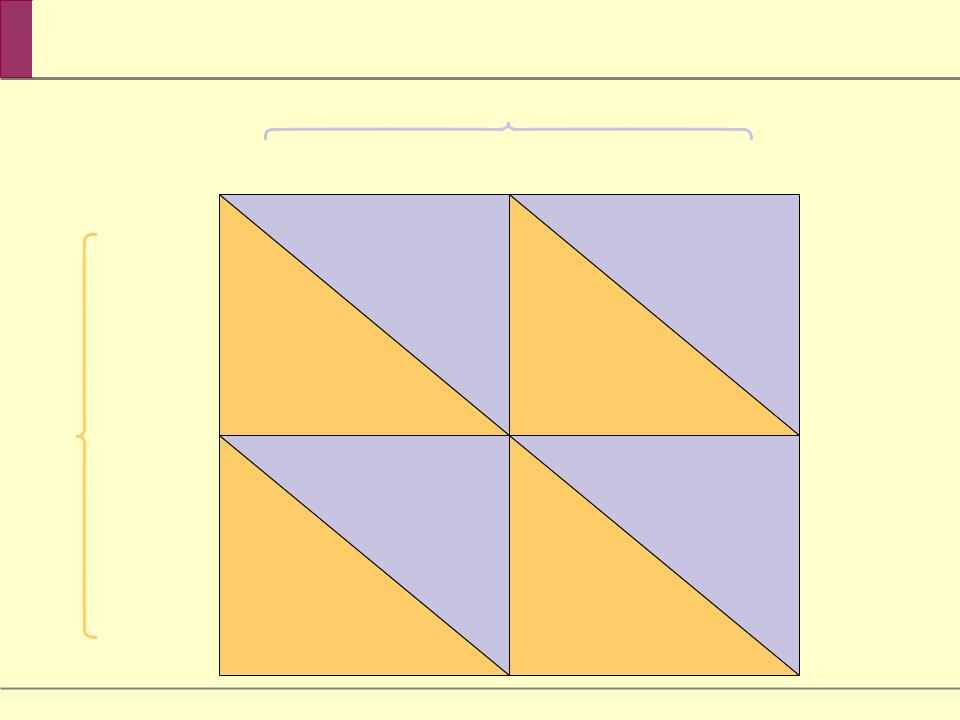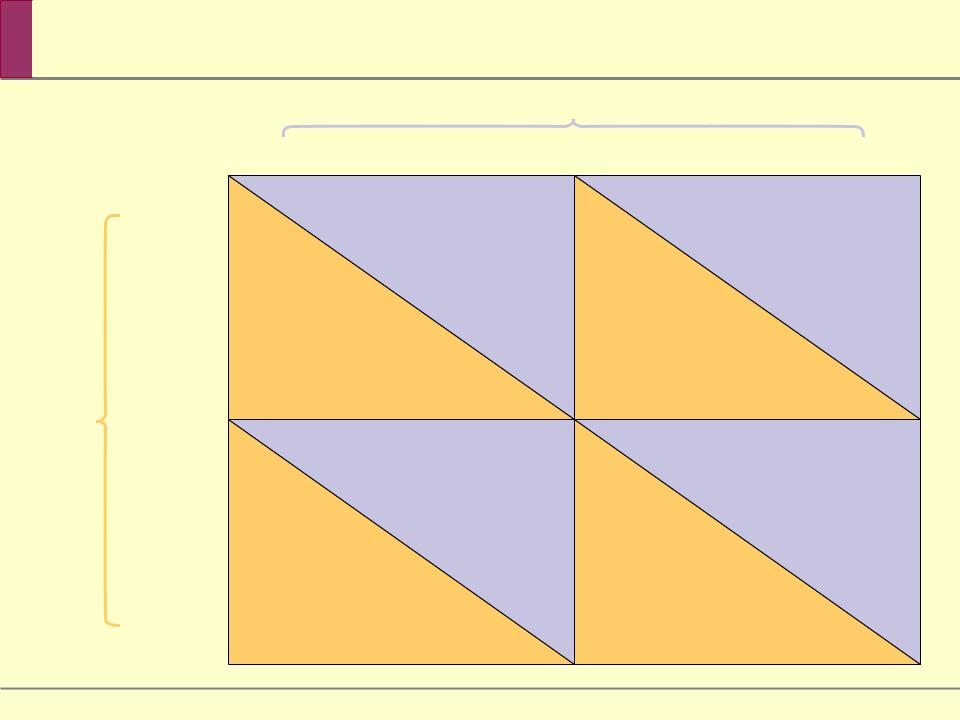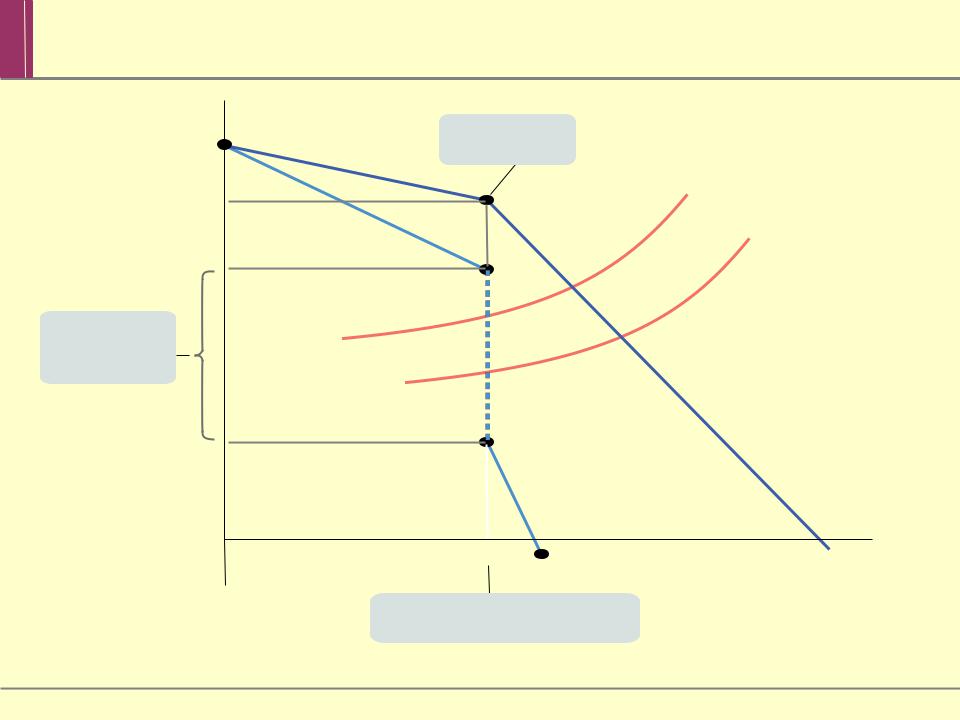
Lectures_micro / Microeconomics_presentation_Chapter_15
.pdf

 Competing in Prices vs. Competing in Quantities
Competing in Prices vs. Competing in Quantities
The logic behind the price competition (or the Bertrand model) is that when firms produce perfect substitutes and have sufficient capacity to satisfy demand when price is equal to marginal cost, then each firm will be compelled to engage in competition by undercutting its rival’s price until the price reaches marginal cost—that is, perfect competition.


 The Prisoners’ Dilemma
The Prisoners’ Dilemma
When the decisions of two or more firms significantly affect each others’ profits, they are in a situation of interdependence.
The study of behavior in situations of interdependence is known as game theory.
The reward received by a player in a game—such as the profit earned by an oligopolist—is that player’s payoff.
A payoff matrix shows how the payoff to each of the participants in a two player game depends on the actions of both. Such a matrix helps us analyze interdependence.


 A
A
Produce 30 million |
Produce 40 million |
pounds |
pounds |
Ajinomoto makes $180 |
Ajinomoto makes $200 |
million pro!t. |
million pro!t. |
ADM makes $180 |
ADM makes $150 |
million pro!t |
million pro!t |
Ajinomoto makes $160 |
Ajinomoto makes $150 |
million pro!t. |
million pro!t. |
Produce 40 million pounds
ADM makes $200 |
ADM makes |
million pro!t |
$160million pro!t |


 The Prisoners’ Dilemma
The Prisoners’ Dilemma
Economists use game theory to study firms’ behavior when there is interdependence between their payoffs. The game can be represented with a payoff matrix. Depending on the payoffs, a player may or may not have a dominant strategy.
When each firm has an incentive to cheat, but both are worse off if both cheat, the situation is known as a prisoners’ dilemma.
The game based on two premises: (1) Each player has an incentive to choose an action that benefits itself at the other player’s expense. (2) When both players act in this way, both are worse off than if they had acted cooperatively.


 The
The
Thelma
Louise
Louise gets 5-year |
Louise gets 2-year |
sentence. |
sentence. |
Thelma gets 5-year |
Thelma gets 20-year |
sentence. |
sentence. |
Louise gets 20-year |
Louise gets 15-year |
sentence. |
sentence. |
Thelma gets 2-year |
Thelma gets 15-year |
sentence. |
sentence. |


 The Prisoners’ Dilemma
The Prisoners’ Dilemma
An action is a dominant strategy when it is a player’s best action regardless of the action taken by the other player. Depending on the payoffs, a player may or may not have a dominant strategy.
A Nash equilibrium, also known as a noncooperative equilibrium, is the result when each player in a game chooses the action that maximizes his or her payoff given the actions of other players, ignoring the effects of his or her action on the payoffs received by those other players.

Overcoming the Prisoners’
Dilemma
Repeated Interaction and Tacit Collusion
Players who don’t take their interdependence into account arrive at a Nash, or non-cooperative, equilibrium. But if a game is played repeatedly, players may engage in strategic behavior, sacrificing short-run profit to influence future behavior. In repeated prisoners’ dilemma games, tit for tat is often a good strategy, leading to successful tacit collusion.
Tit for tat involves playing cooperatively at first, then doing whatever the other player did in the previous period.
When firms limit production and raise prices in a way that raises each others’ profits, even though they have not made any formal agreement, they are engaged in tacit collusion.


 How
How
ADM
Ajinomoto
Ajinomoto makes $180 million |
Ajinomoto makes $200 |
pro!t each year. |
million pro!t 1st year, $160 |
|
pro!t each later year. |
ADM makes $180 million pro!t each year.
million pro!t each later million pro!t 1st year, $year.160 million pro!t each later year.
millioneach laterp oyear!t 1.st year, $160 million pro!t each later year.
ADMpro!tmakesch later$150yearmillion. pro!t 1st year, $160 million pro!t each later year.
Ajinomoto makes $160 million pro!t each year.
ADM makes $160 million pro!t each year.


 The Kinked Demand Curve
The Kinked Demand Curve
An oligopolist who believes she will lose a substantial number of sales if she reduces output and increases her price, but will gain only a few additional sales if she increases output and lowers her price away from the tacit collusion outcome,
An oligopolist who believes she will lose a substantial number of sales if she reduces output
and increases her price, but will gain only a few additional sales if she increases output and lowers her price away from the tacit collusion outcome, faces a kinked demand curve—very flat above the

1. Any marginal cost in this region
|
outcome |
|
MC 1 |
|
MC |
|
2 |
|
D |
|
Quantity |
2. … |
of |
output |
|
